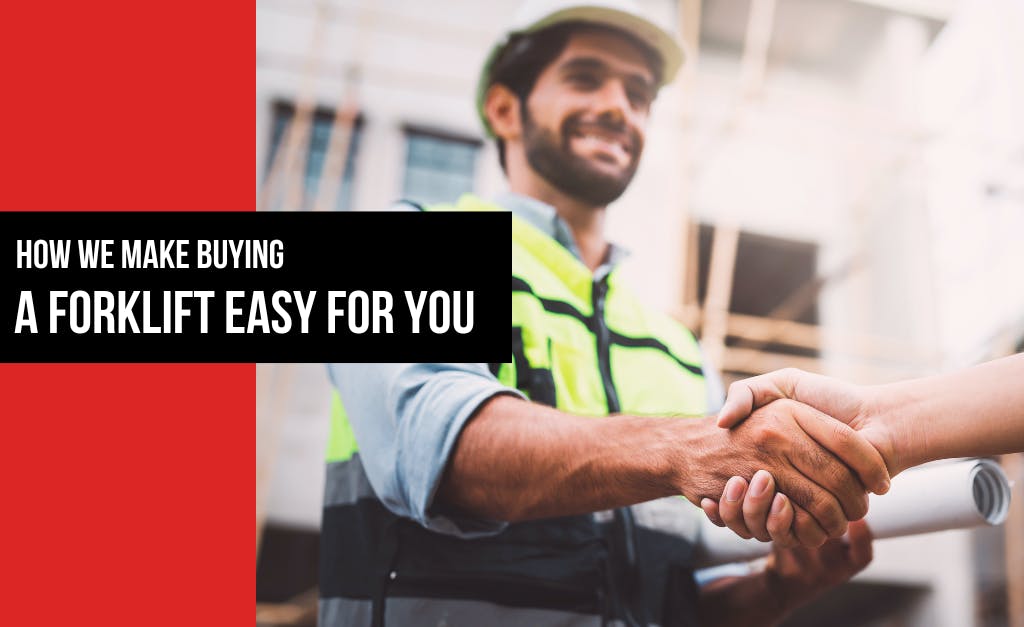Many businesses choose to buy forklift equipment as a wise investment to increase overall productivity and efficiency. These machines offer versatility and robustness in any type of industry – be it construction, logistics, forestry or agriculture.
Forklift trucks are generally used for handling massive volumes and heavy loads, but they do come in a variety of types and capacities. Some types of forklifts are designed to handle specialized jobs. Forklift capacities dictate their lifting power and the type of load that they can handle. That’s why it’s important to choose the type of forklift that best suits your needs. It may seem daunting to take a lot of factors into consideration when purchasing a forklift. Let’s take a look at some of the tips and tricks that make it easier to purchase your very own forklift.
1. Determine your needs
Knowing the tasks and functions that you need your forklift to perform can help you decide on its type, size, and capacity. Do you need to buy forklift for moving and lifting heavy loads? Or do you need a forklift that can help you transport pallets within short distances? Determine whether you’re going to use your forklift for indoor or outdoor operations. You should also consider if you are purchasing a forklift to complete a one-time task or to meet recurring project demands. A quick run through these questions can help to narrow down your options and focus on other factors such as brands or budget.
2. Consider your budget
Your budget for a new forklift is unique to your business. It’s not enough to consider the upfront cost that you’ll be paying upon purchase. You also have to take a look at the potential fuel costs, storage, maintenance, upgrades, and annual servicing as part of your budget. This will eventually help you decide whether buying a new or used forklift is ideal for you.
3. Research different models
When you already have a clear idea of your business needs and budget, it’s time to dig deeper with some research. Take as much time as you want in comparing different forklift brands and models. Make sure to take a look at the operational and safety features, as well as the maintenance and forklift attachment options.
4. Get professional advice
Don’t hesitate to drop by your trusted forklift dealer to discuss your requirements and budget. They can provide valuable guidance in choosing the best forklift that meets your needs. Forklift dealers also offer great financing programs that can work around your budget, so you won’t have to break the bank when buying your forklift. Check if your local forklift dealer also offers servicing, customisation, spare parts and attachments for the forklift brands or models that you have chosen.
5. Consider maintenance and repairs
Part of the planning process of purchasing a forklift is making a budget for its ongoing maintenance and repair. Some forklift types may require fewer maintenance compared to others. Consider warranty options for newly purchased forklifts take a look at their coverage. It’s also good practice to look for a forklift with a reliable customer support service, so that any issues can be addressed immediately.
6. Buy new or used
Purchasing a used forklift is a strategic way to keep your costs down. In some instances, it is better to buy used forklift compared to a new one, especially when you have budget constraints. The important thing to remember when purchasing used forklifts is to carefully inspect the unit and its service record. It’s also important to purchase used forklifts from a trusted dealership.
Buying a forklift is a major investment for your business. Whether you’re looking to buy a new or used forklift, these tips can help you choose the best forklift that fits your operations. If you’re having trouble in finding the right forklift for you, we’re ready to make it easy for you. Contact our professional team now, and we’ll get you started in choosing a forklift that boosts your productivity and efficiency to the next level.
